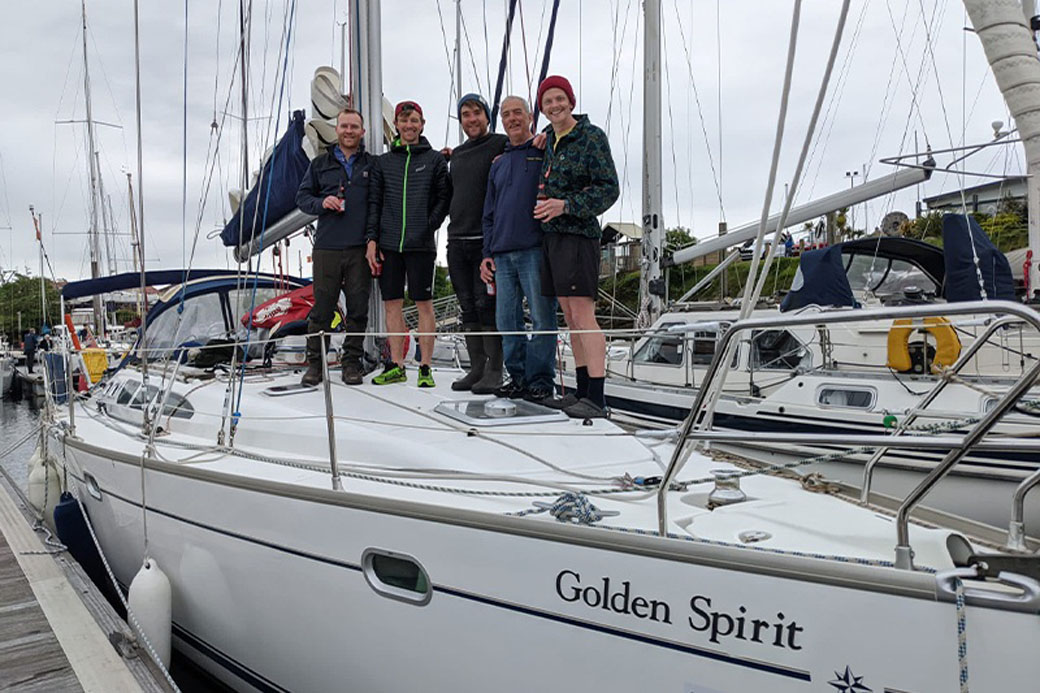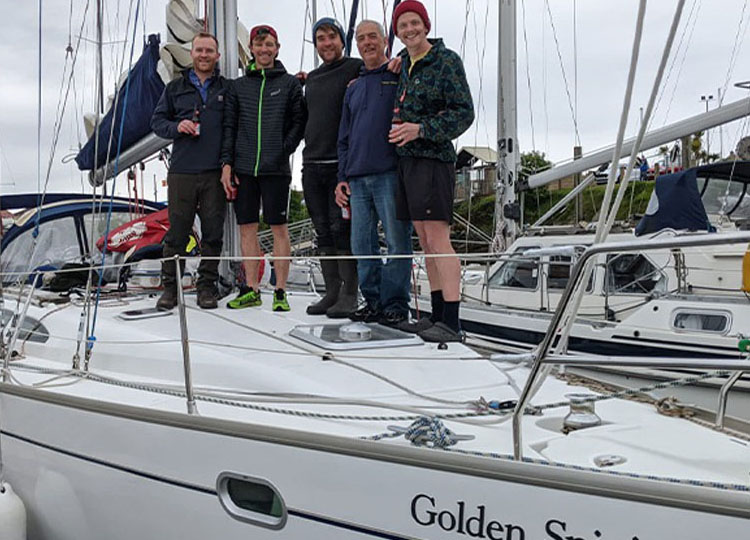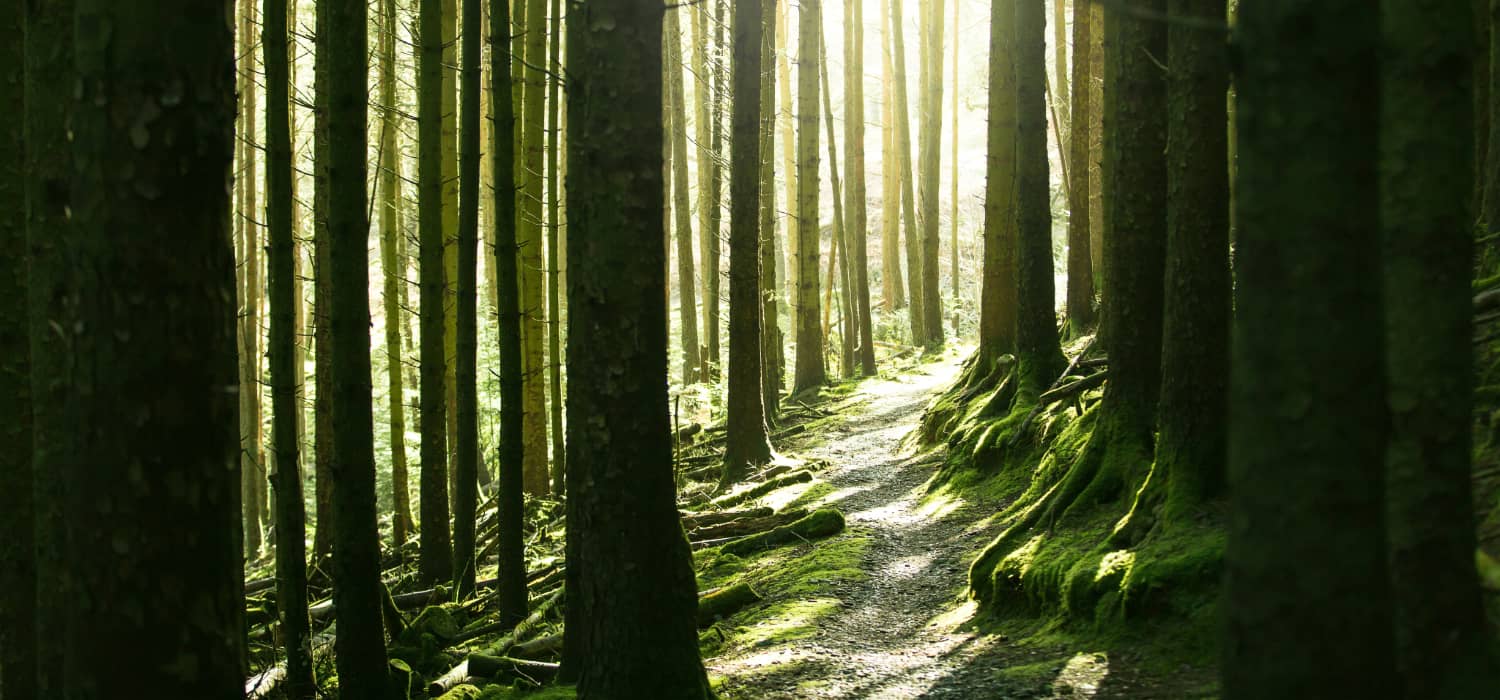
INOV8 ambassador Jack Scott recently took part in the 2022 Scottish Islands Peaks Race (SIPR) – an incredible event that involves sailing and running around the stunning, but often wild, islands of west coast of Scotland. Once back on the mainland, we talked to Jack about his first-ever experience of the SIPR.
What is the Scottish Islands Peaks Race and where does the course go?
The SIPR is a sailing and fell running adventure for teams usually consisting of three sailors and two runners. Each team has their own boat – ours was the Golden Spirit, skippered by Roger Malkin. The course encompasses three Scottish islands (Isles) – Mull, Jura and Arran. You sail to each isle, then the runners got off the boat and navigate their way up and down the highest mountains. The winners are the first team back to the mainland.
It starts from the small harbor town of Oban on the west coastline of Scotland, and an initial sail across the Firth of Lorn to the Isle of Mull, where the runners get out and navigate their way to the island’s highest summit, Ben More, and back again. The runners on our boat were me and Huw Davies.
With everyone back on board, it’s then a long and difficult sail towards the Isle of Jura through the notoriously hazardous Gulf of Corryvreckan… but only if you’ve timed it right and got the tide! If not it’s an even longer sail to the west which will see you circle the entire island, adding 10+ hours to your race time! Once you’ve arrived at the shores of Jura it’s a short but steep and rocky run taking in the island’s three famous mountains known as the Paps.
Then comes another long sail (14 hours for us) to the last of the isles, Arran. From the harbour port of Lamlash it’s an out and back run to the island’s highest summit, Goat Fell. This is around 19 miles with 4,500ft of elevation. After that, it’s all aboard again for the final sail to Troon, back on the mainland.
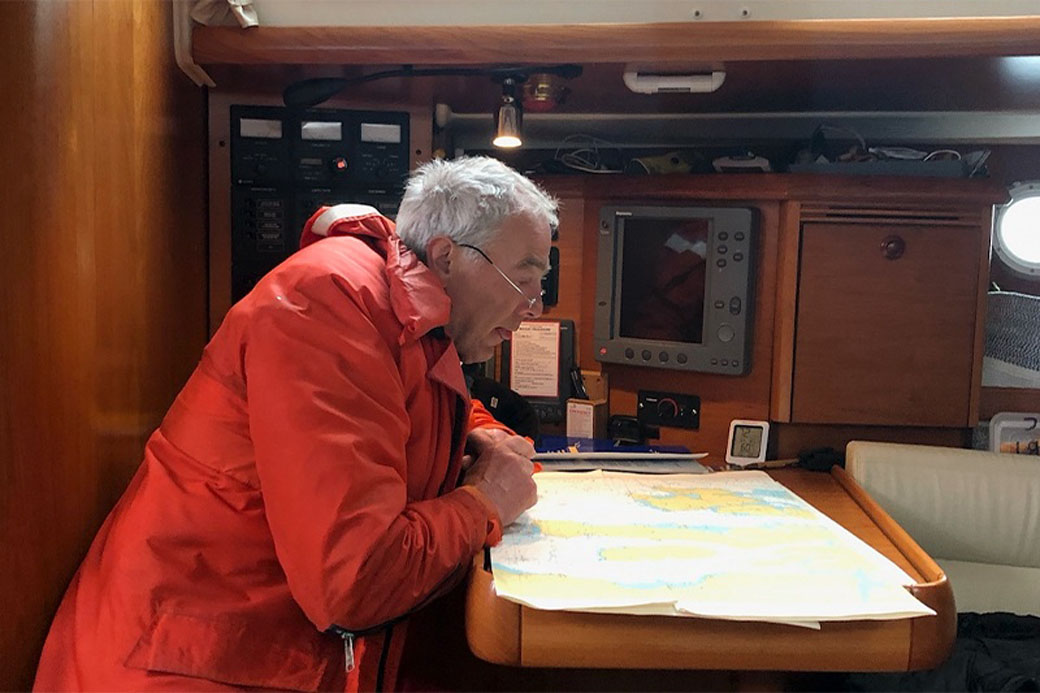
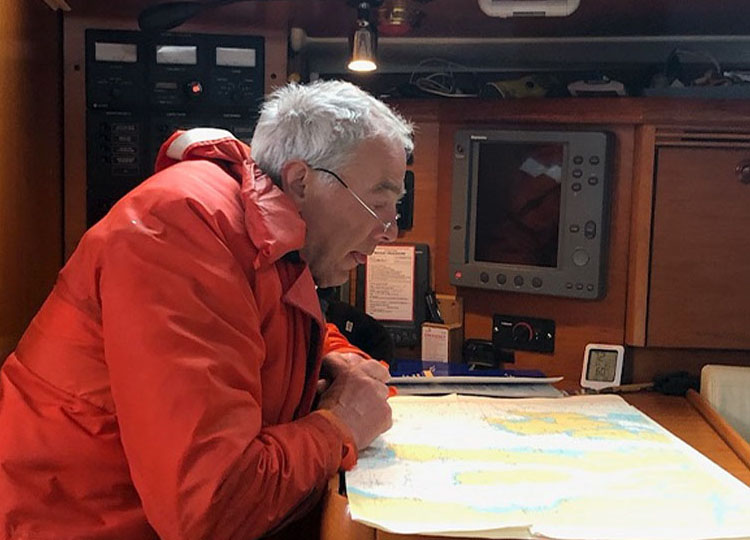
Fairly straightforward then?!
Anything but! For starters, runners must row from the boat to the shore of each isle, and back again post-run! In some cases, this can be 500 meters. In rough waters, or at night, this can be very challenging.
After our last run, we rowed back to the boat expecting a nice sail back to Troon. However, once out of the sheltered bay, the Golden Spirit was caught out by strong gusts coming from the south. The crew had to work fast and think on their feet to get us out of a sticky situation. It was the only time I saw Captain Roger get a little hot under the collar! It was amazing to watch the skill involved – in this race, the sailors must rely solely on the wind as the use of engines is not allowed when runners are onboard (except in an emergency).
We battled our way to Troon, clocking a total of 220 nautical miles in the boat and 62 miles on our feet (including around 14,500ft of ascent).
How are the teams formed?
I first heard about the race in the Autumn of 2021 whilst in the pub discussing and planning my Lakes, Meres and Waters attempt. Myself, Huw, Glenn (Huw’s dad who did the race twice in the 90s) and my father-in-law were plotting and planning when Huw mentioned the Scottish Islands Peaks Race and whether I’d be interested in being involved. I’d always wanted an excuse to head that far north, and this seemed like the perfect opportunity, but we needed a boat and a crew!
Huw thought it through and within a week we had our boat sorted, the Golden Spirit! Our captain was Roger is the father of Huw’s friend Alex, who also came aboard as part of the three-man sailing crew, along with his brother Matt.
On the SIPR website there is an option to add your name as part of a running or sailing team and eager competitors can be matched that way. We were lucky to have our own team, and with all of us originating from the small town of Stone in Staffordshire it had a local, family feel. Roger was extremely enthusiastic and along with Alex and Matt sailed exceptionally well to deliver us safely to and from each isle in good time… and without too much mischief!
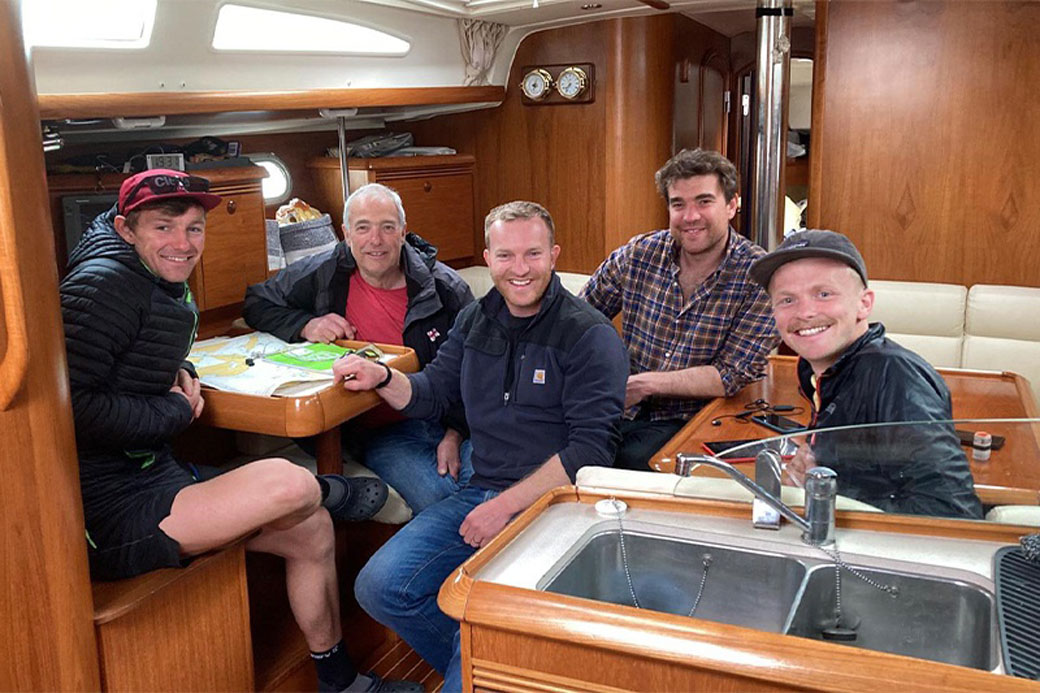
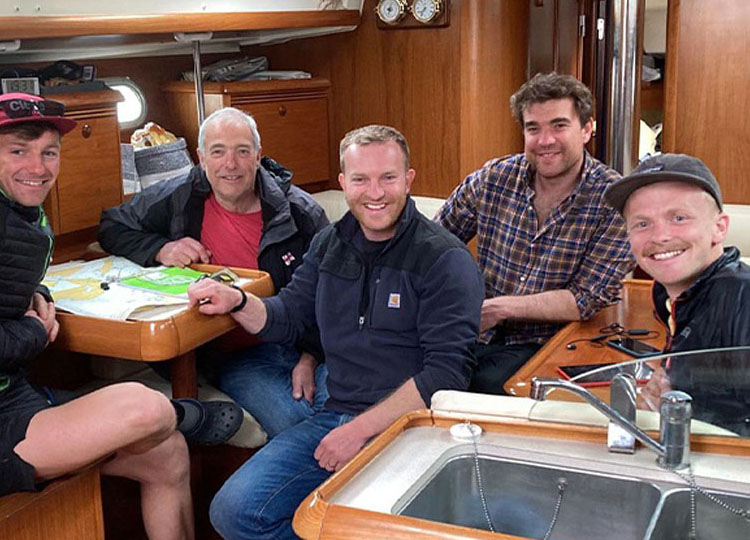
You and Huw recorded the fastest overall run time in 11 hours 05 mins (winning the King of the Bens trophy) but overall the team made it to the finish in Troon in 12th place. What happened at sea?
When we registered for the event, we heard other teams discussing how they would cut weight on their boat to make the sailing element of the challenge more efficient and faster. That certainly wasn’t the case for us aboard the Golden Spirit! Our boat was on the luxurious side, with the kitchen and cupboards packed to the rafters with food and supplies. Roger uses the boat often and it is like a floating home! Very comfortable and pleasant, not built for speed. Me and Huw knew this, and we focused our attentions on completing our running legs as quickly as possible, with an eye on the King of the Bens trophy.
The quality and competence of our sailors (Roger, Matt and Alex) was of the highest order. Huw and I chipped in when needed and gave the lads a hand. To be honest, I was surprised just how much work and attention to detail was involved in sailing. I’d never been on a boat like this before. Roger reassured me that it wasn’t always this frantic and it was down to the fact we were in a ‘race’ when orders were being shouted out and ropes flying all over the place.
We couldn’t have sailed any faster than we did. Roger, Matt and Alex were amazed that the boat had completed the race so quickly! In total it took us 46 hours 18 mins (which included 35 hours of sailing), while the winners aboard Tangaroa did a total time of 38 hours 29 mins. Maybe we could have gained another 10 minutes if Roger hadn’t packed five crates of beer hidden under a seat, which I discovered at some point on the Sunday morning sail between Jura and Arran when looking for some orange juice!
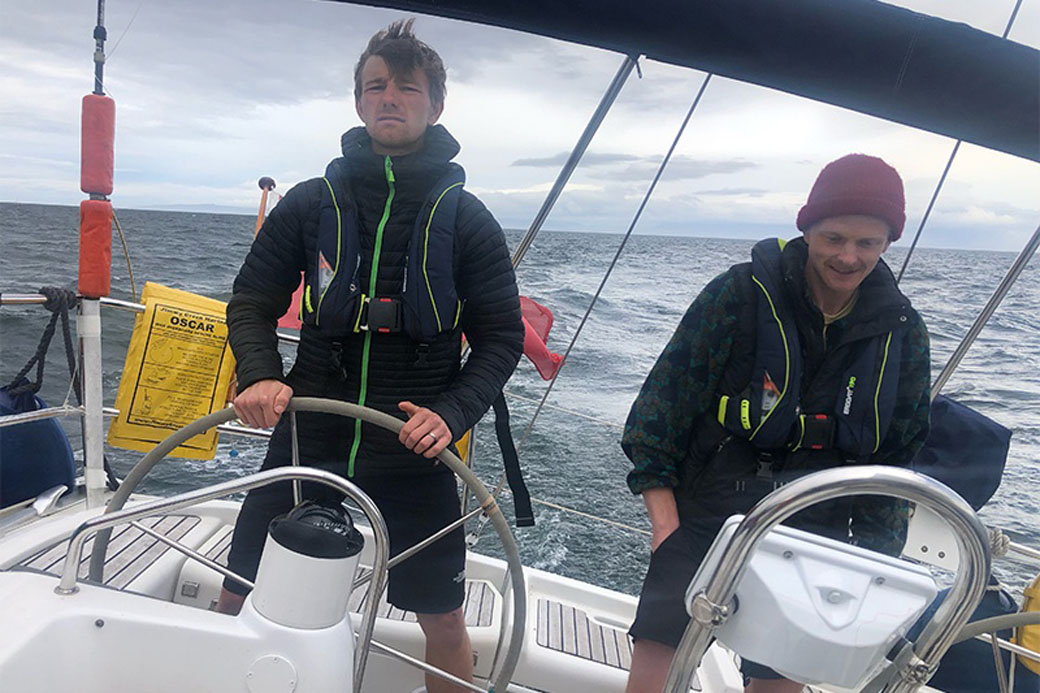
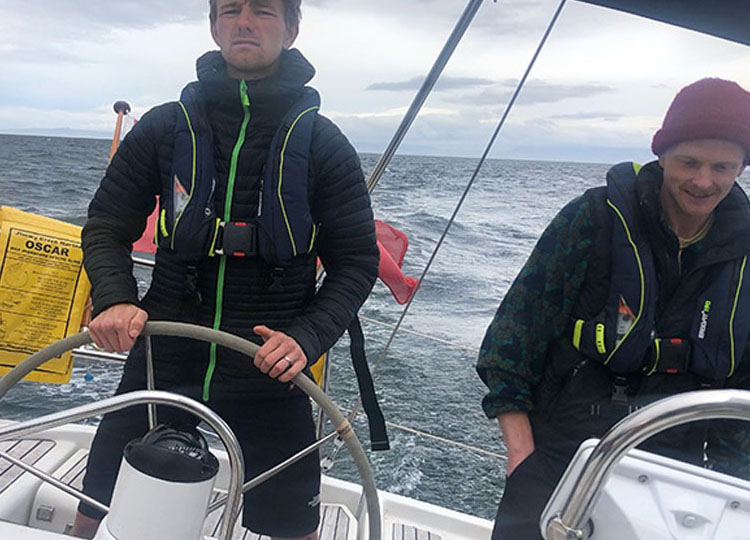
Was it tough to sleep and recover when on the boat?
We were advised to stay above deck as much as possible to help avoid sea sickness, which thankfully neither me nor Huw suffered with. I think we were one of the only teams, out of around 40 who registered, not to suffer with sickness! The seas were rough at times, it was uncomfortable, but we took anti sickness tablets every five hours and got away with it! I think this may have something to do with the size and scale of our boat too. It was a big lump and although we were getting thrown around from pillar to post by the rolling waves, the sailors did a superb job of keeping us ‘steady’ and on course.
Between Jura and Arran the sailing time was 14 hours, that’s a long time sitting down when the boat is rocking side to side. I think over the weekend I got around seven hours of sleep. Early on Sunday morning I went below deck to try and grab two hours sleep. The sea was rough at the time, and it was difficult to drift off, but I managed. I woke up and the cabin looked like an absolute mess. I had flipped 180 degrees in the bed and didn’t know where I was! We’d caught a tail wind in the Firth of Clyde and it had catapulted us around the southernmost tip of Arran towards the port town of Lamlash a lot quicker than expected. I think I heard Roger say we were doing 15 knots (27kmph)!
The roles myself and Huw naturally adopted involved passing over winch handles to the crew or trying to pack away the sails if they had been changed. Also making cups of tea and coffee for the lads who were guiding us on our way. Although it must be said, every time we got back on the boat after a running leg, we had a meal waiting for us on the table or in the oven. Pizza, spaghetti and meatballs, even a curry. The crew did a superb job of looking after the runners.
Huw did steer the boat for a good chunk of time at one point, under the close supervision of Alex. I had a quick go as we pulled into Troon, the less said about that the better. I couldn’t believe how sensitive the wheel was and we nearly ended up overboard!
What did the sailors do while you ran?
The sailors worked in shifts, but it was more like, ‘I've got to sleep so I'm going,’ rather than a set regime. Roger did most of the sailing and only slept for three or four hours throughout.
Whilst we ran up the mountains, the lads would do any maintenance needed on the boat, clean up, rest and start to cook for us. Roger would use this time to check the tides and maps to make sure he was happy with the plan of action once we arrived back. The boat is fitted with a state-of-the-art GPS unit, but Roger would often rely on his old school maps and charts below deck at the captain’s table for this information.
Which was your favourite island run and why?
I think Jura was my favourite. I followed Huw up from the beach and into the mountains – he knows the Paps extremely well as he’s done the Isle of Jura Fell Race several times. I thoroughly enjoyed hearing about all the memories he’d had on these famous slopes but also those of his dad, Glenn, who has just completed his 21st Isle of Jura Fell Race. What a man, what a place!
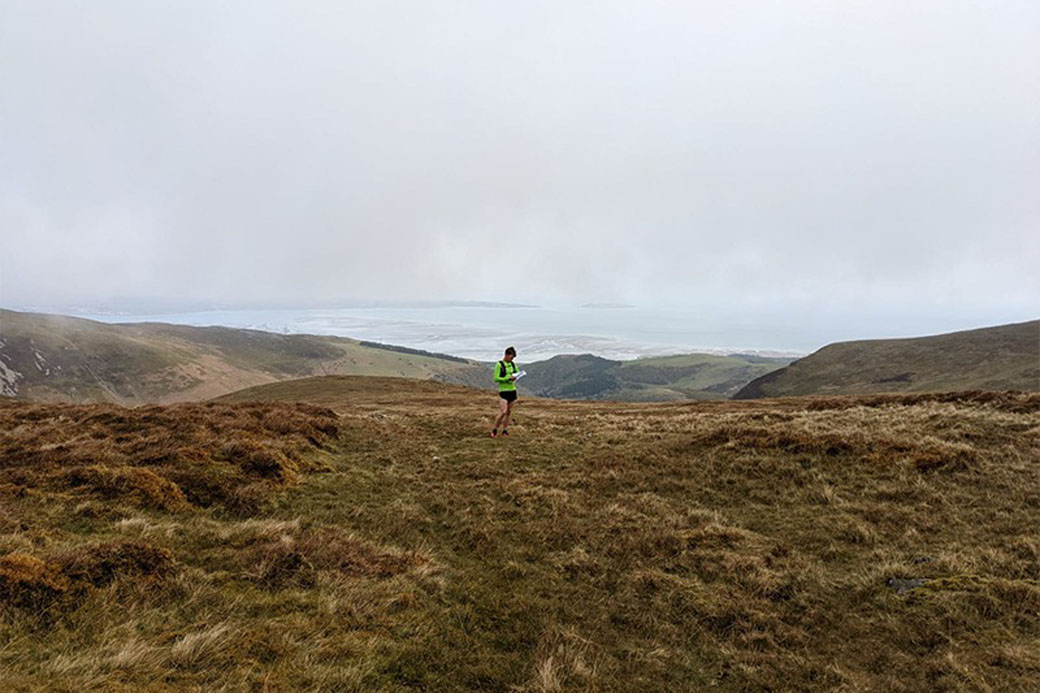
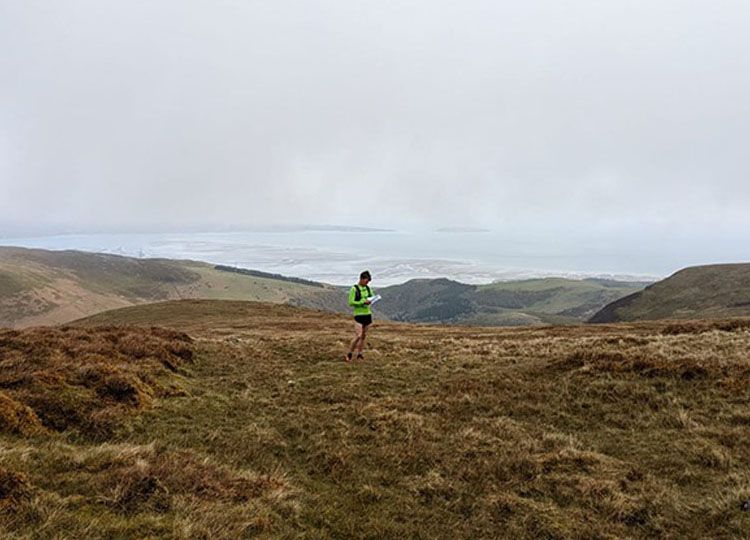
What key bits of INOV8 kit did you use and how did they perform?
The mandatory kit for this race was excessive, so fitting everything in my usual RACE ULTRA PRO 5 VEST wasn’t an option. Instead, I used the 15-litre ADVENTURELITE 15. This is a comfy pack and has plenty of room for kit and supplies. The pack sat still on my back and, although I could feel the weight of the kit, it was comfortable and didn’t irritate or rub me at all.
The standout performer was the X-TALON G 235 shoes. They are on a different level! The terrain and underfoot conditions on some of these isles is extremely difficult, especially Jura and the rocky scree on the Paps. The shoes gave me confidence when descending off-piste in the scree. They protected my toes and the hard-wearing Graphene-Grip was super sticky!
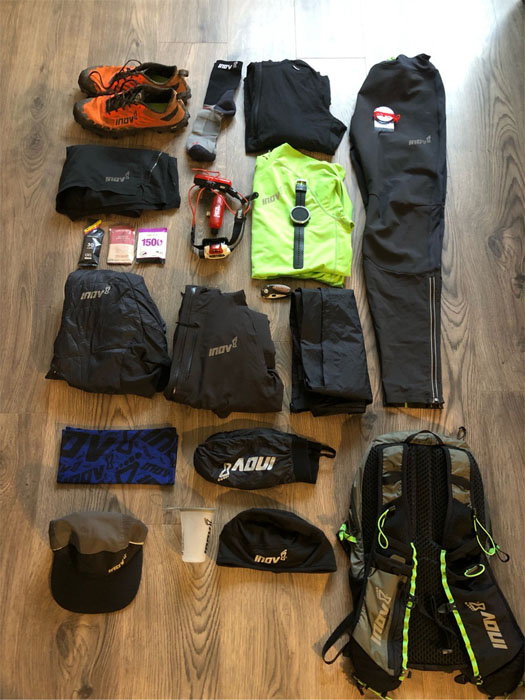
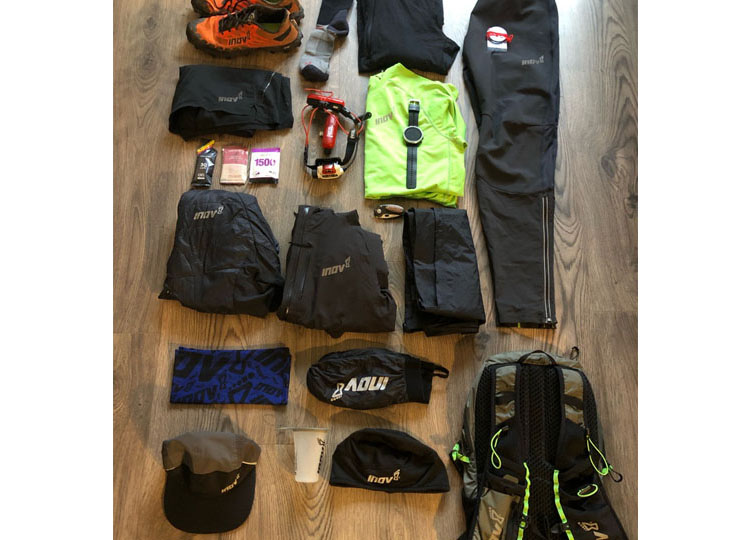
What did you learn from the experience and how does it rank against other sporting things you've done?
Me and Huw were confident we could move well and with a stroke of luck (arriving at the islands in daylight) we felt we could be competitive in the race. However, during the first leg on Mull, we had a wake-up call. Finding the summit of Ben More was extremely difficult. The maps weren't making sense and we had been warned that compasses may not work above 800m because of a magnetic pull within the mountain. We were in the clag, traversing some huge rocks and scrambling to the summit. We slowed down dramatically when we reached the summit. I think we both knew this wasn’t going to be straight forward and the terrain was going to fight back. We have a lot of mountain experience between us, but that Mull leg was tough, very tough.
When we got back to the boat, we both said how difficult we had found it. It was only 24 miles with around 4,000ft of elevation but it just sapped our energy. That terrain gives you no ‘free miles’ even the descending or road sections are brutal. This was Scotland and it was wild, but it's what I wanted! I’d mentioned to Huw before the race that I wanted that feeling of gritting my teeth again, trudging on and battling fatigue. I got it!
I'm very grateful to have had the opportunity, been invited along, and had experiences I will never forget!
